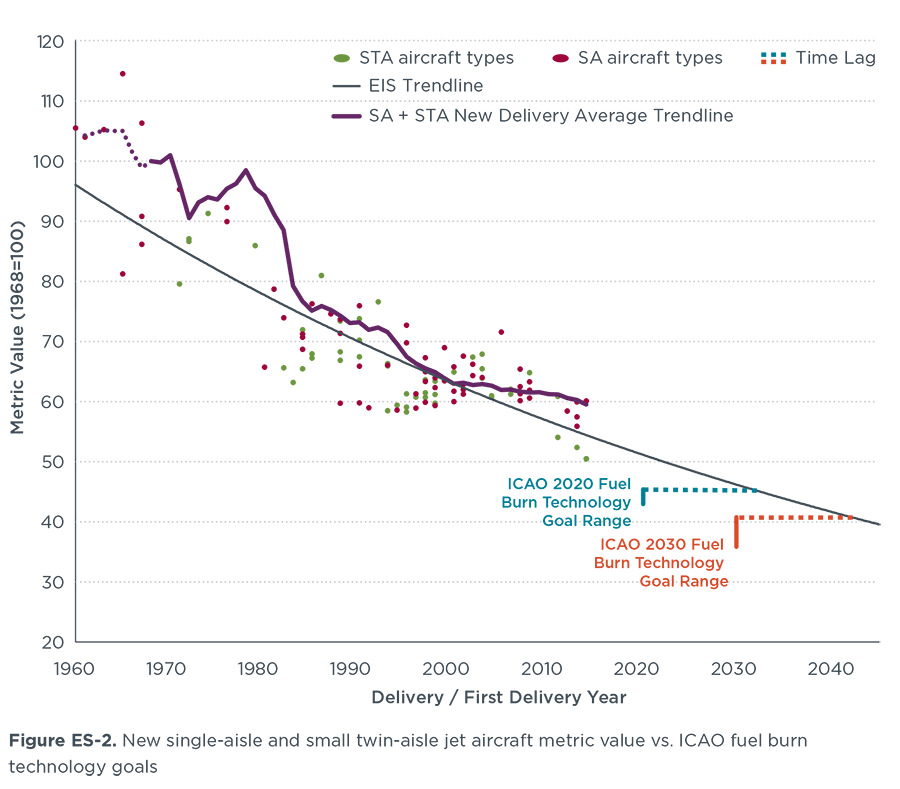One weird trick to improve airline efficiency – gain belly weight!
White paper
Fuel efficiency trends for new commercial jet aircraft: 1960 to 2014
This report updates a 2009 study that analyzed the sales- and activity-weighted fuel efficiency improvement of commercial jet aircraft from 1960 to 2008. It improves on that work in several significant ways, updating with new aircraft types and data for 2009 to 2014 deliveries and using refined metrics for measurement, including the efficiency metric value that the International Civil Aviation Organization (ICAO) has developed for its international CO2 standard.
Key findings:
- Between 1968 and 2014 the average fuel burn of new aircraft fell approximately 45%, or a compound annual reduction rate of 1.3%.
- The rate of efficiency improvement varied significantly over time: average fuel efficiency improved by 2.6% per year during 1980s, while little or no improvement was seen during the 1970s and in the period from 1995 to 2005.
- Today, the rate of efficiency improvement for new aircraft has returned back to the historical average. This trend, probably attributable to the spike in fuel prices after 2004, is likely to continue for the near term as more new aircraft types are brought to market.
- Despite this progress, manufacturers continue to lag United Nations’ fuel efficiency goals for new aircraft. On average, industry is about 12 years behind the 2020 and 2030 fuel efficiency goals established by ICAO, the UN agency that overseas international aviation.
- Continued oil market volatility, combined with evidence that the industry is lagging its technological potential, highlights the need for a meaningful CO2 standard to help industry meet its environmental goals.

